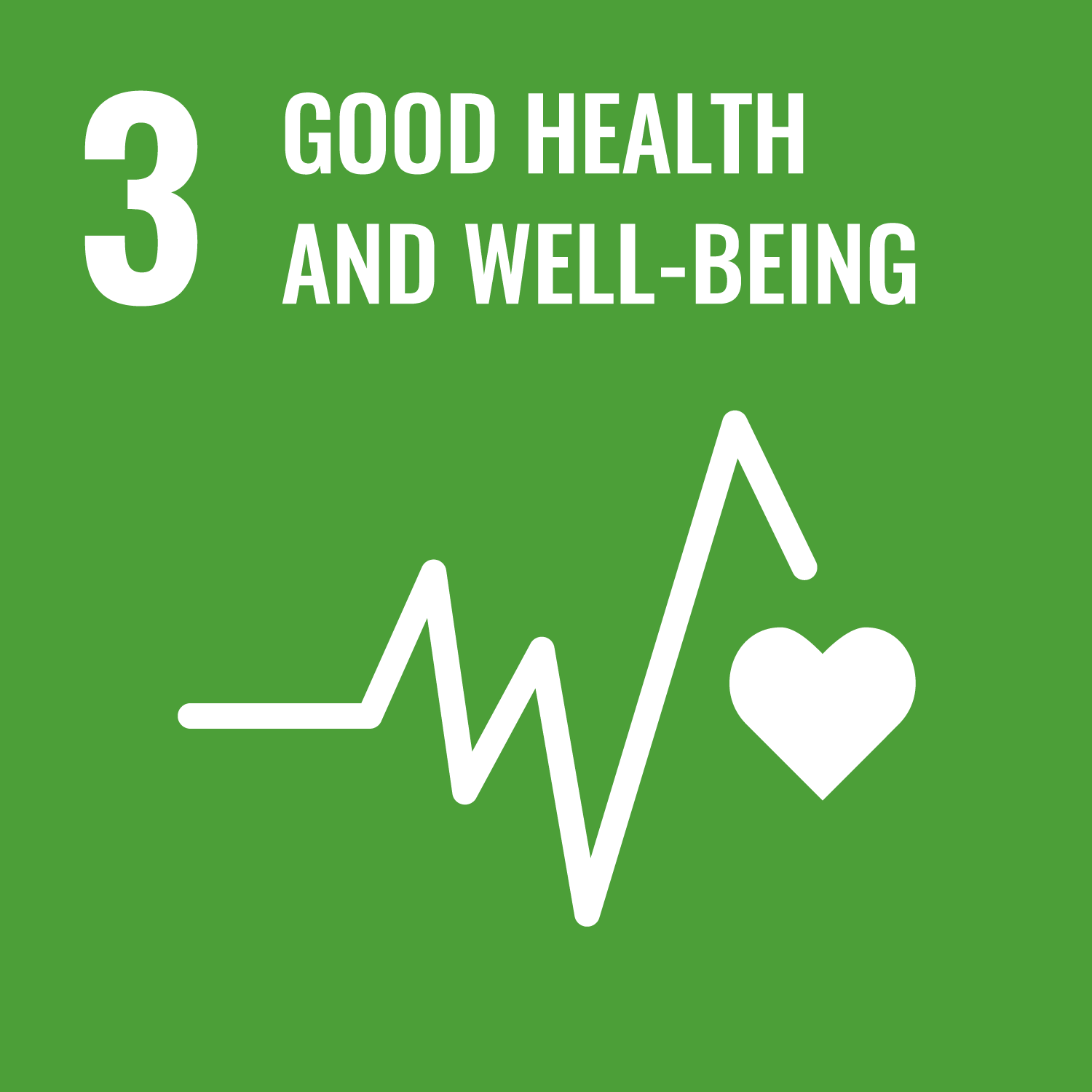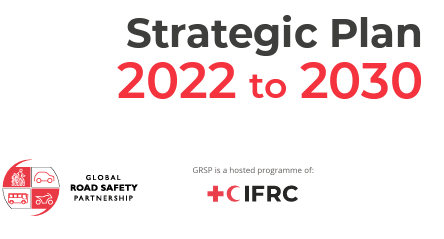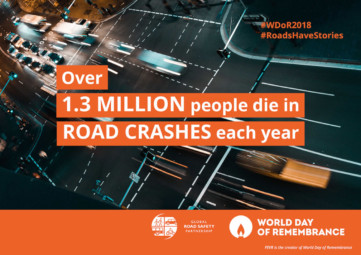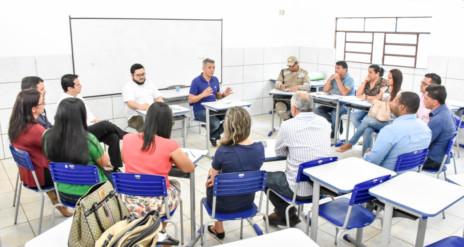A Decade of Action case study in partnership: Brazil’s road safety revolution
How a unique partnership approach developed in Brazil is being expanded nationally and internationally with engagement of the private-sector, government and a leading, global philanthropic organization.
In Brazil’s western state of Mato Grosso do Sul, the capital city of Campo Grande is at the frontier of Brazil’s road-safety revolution. Only 400 kilometers from the border of Paraguay, Campo Grande is recognized as the state’s agricultural, tourism and industrial base.
The number of people driving motorcycles is also rising — about 15 per cent each year in recent years. “In Campo Grande, we have about 420,000 registered vehicles, of which 100,000 are motorcycles,” says Rudel Espíndola Trindade Junior , the Director-President of Agetran (Municipal Agency for Traffic and Transport). “This year, the motorcycle fleet increased 20 per cent while the population increases only about 1 percent each year.”
“This region has had a considerable economical growth in the last five years,” he explains. “This leads people to buy more cars and motorcycles and people are moving away from using public transport in favor to private transport.”
This trend, which is being repeated in many cities and towns in Brazil, means newer and faster vehicles are driving on more modern, recently paved roads. At the same time, a kind of ‘wild west’ atmosphere can be seen in some cities, in which appropriate road behaviours haven’t caught up to the improvements in infrastructure.
Twenty years ago, Campo Grande already had one of the highest national traffic crash rates in a country that last year had one of the world’s worst crash-related fatality rates.
A new story
Today, however, this city of almost 800,000 people (and numerous other cities like it around Brazil) have a different story to tell. While road-crash related death and serious injuries are still unacceptably high, they are in many cases starting to diminish — even as the number of motorcycle and automobile drivers continues to rise at a dramatic rate.
Figures in Campo Grande from the first semester of 2011, for example, show that the number of people killed and seriously injured went down from 637 to 536 — a 16-percent decline just as motorcycle ownership rose by roughly 20 percent (see chart).
 This turnaround is the result of concerted, comprehensive approach that involves the commitment of all sectors of Campo Grande’s city government. As part GRSP’s Proactive Partnership Process, various key agencies in the city government cooperate on comprehensive data collection that then allows the cities to focus their resources on interventions that have the highest impact.
This turnaround is the result of concerted, comprehensive approach that involves the commitment of all sectors of Campo Grande’s city government. As part GRSP’s Proactive Partnership Process, various key agencies in the city government cooperate on comprehensive data collection that then allows the cities to focus their resources on interventions that have the highest impact.
A story of global and local partnership
The success of this approach is also due to the support of a wide range of global partners and supporters from the private, public and philanthropic sectors. For example, the Brazilian Federal Health Ministry has long recognized road-crash crisis as a major public health issue.
In the last decade, new national policies and legislation — along with a range of actions — have been undertaken by numerous Federal and state agencies and, increasingly, the Health Ministry has recognized the importance of partnership in developing targeted, local solutions in an extremely diverse country.
“The traffic issue is complex, multi-factorial, multi-causal — there isn’t one sole specific cause,” says Cheila Marina de Lima, technical consultant for Brazil’s Federal Ministry Of Health in the field of Violence and Accident Prevention and Surveillance.
“One sector alone cannot deal with this problem,” she continues. “You have to intervene through various sectors and the involvement of society as whole is essential. So in Brazil, the Ministry of Health funds road-safety projects only if the city involved commits to have inter-sectoral collaboration among its secretariats and other local entities.”
Technical support in building up city involvement in the Proactive Partnership Strategy started, in Brazil, with GRSP from 2001 onwards and became stronger in 2006 with the support of a consortium of leading global energy and auto makers known as the Global Road Safety Initiative (managed through GRSP). Formed in 2004, the GRSI (which includes five leading energy and auto companies: Michelin, Renault, Total, Toyota and Shell) was formed to fund the testing of evidence based solutions to road safety crisis in low- and middle-income countries.
Vida no Transito: a major boost
Then in 2010, Brazil’s road safety partnership approach received a major injection of energy when a global road safety programme known as Road Safety in Ten Countries programme (or RS-10 for short or Vida no Trânsito in Brazil), funded by Bloomberg Philanthrophies, allowed for a dramatic scale up partnership based road-safety activities in the country.
Vida no Trânsito has helped the Brazilian government and numerous cities to dramatically scale up existing road-safety activities and expand the partnership approach into new and even larger cities such as Curitiba and Belo Horizonte.
Again, partnership was a key element in how the project is being implemented. Last year, when the RS-10/Vida no Trânsito project began, the Brazilian federal commission overseeing the project chose to use the Proactive Partnership Strategy as the “operative methodology” for all Vida no Trânsito projects. Since then, the Brazilian Ministry of Health went a step further, opting to implement the Proactive Partnership Process as the methodology for implementing Vida no Trânsito in all state capitals, including also Brasília in the Federal District.
For GRSP, this decision is a strong validation of a process that is providing locally owned solutions. “This is a tremendous honour and a validation of the work that the cities involved in PPS have been doing over the years,” says José Cardita, who manages the Global Road Safety Partnership’s operations in Brazil and who created the PPS approach some 11 years ago, improving it continuously with implementation support from Brazilian cities. “It is a tremendous honor to work shoulder to shoulder with these cities and now we are honoured to have the partnership approach selected as the methodology implemented at a national level.”
With support from the Global Road Safety Initiative, the PPS approach developed in Brazil is being exported internationally, with pilot projects being developed in Morocco, Cambodia, Serbia and Zambia.
The passion of partnership
To get a sense of what that partnership at the local level can look like, like travel north from Campo Grande to the city of Palmas, the capital of Tocantins state and home to about 250,000 people.
Only two years into its engagement with Vida no Trânsito and the PPS process, Palmas boasts a vibrant, energetic and well-rounded road-safety team that has set ambitious goals for road-crash reduction as part of the Decade of Action for Road Safety and is already beginning to show results.
With more than 44 public-sector partners, 24 private-sector partners and eight civil-society partners, the Palmas team is engaged in several hundred diverse road-safety activities, ranging from education in schools and along roadways, enforcement blitzes at strategic locations, improved signs and infrastructure enhancements such as crosswalks, among other things.
“The Vida no Trânsito project has pushed us to do more planned and evidence- based work,” says Marileide Cipriano de Souza, head of the Office of Safety, Traffic, Transports and Mobility Secretariat and vice president of the city’s Vida no Trânsito Commission.
“Before, we had projects but the actions were not based on specific risk factors or groups,” de Souza continues. “We used to do it based on intuition, not evidence. Today things have changed. I think this is the greatest gain the Proactive Partnership Strategy has brought us.
By the numbers
A few results of Proactive Partnership Strategy:
16: percent decline in road-crash fatalities and serious injuries in GRSP-partner city Campo Grande, Brazil from first half 2010 to the first half 2011.
20: Percentage by which motorcycle registration increased in Campo Grande from first half of 2010 to the first half of 2011.
14: Percentage by which motorcycle registration increased in GRSP partner city Teresina, Brazil from first three quarters of 2010 to the first three quarters of 2011.
34: percentage of decline in road crash fatalities in Teresina from the first three quarters of 2010 when compared to the first three quarters of 2011.
180: Number of consecutive days without a fatal crash in Guaiba, Brazil in 2011.
364: Number of non-consecutive days without a fatal crash in Resende, Brazil in 2011.






